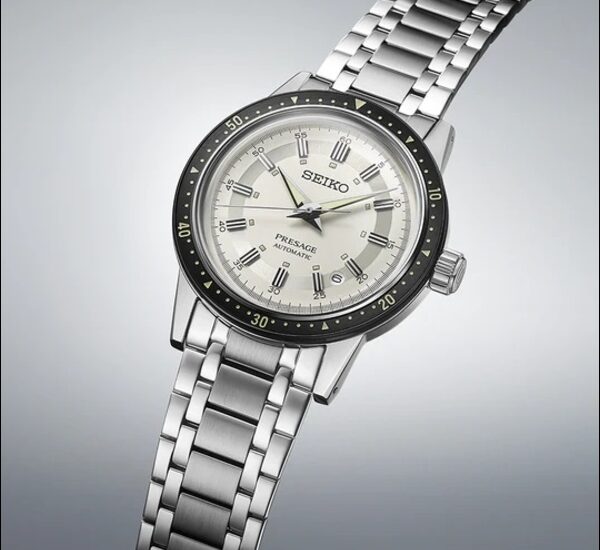Precision Meets Practicality: The Technical Superiority
The Japanese automatic watch has made an impressive conquest by means of the fusion technologies that have cut across the boundaries of the traditional technology of limitless restriction. The example of this innovation is the stunning Spring Drive movement, which is available in the luxury Japanese automatic watch collections, as this complex mechanical component provides the exact quality of timekeeping as a quartz watch. This hybrid design introduces accuracy of one second per day, better even than Swiss chronometers with COSC certification, and the stylish sweeping hand on the seconds hand everyone loves about horology. This type of engineering is a basic rethinking of the physics of timekeeping and makes Japanese watches to be at the highest state of technical perfection without compromise of the poetic movement.
The Value Proposition: Accessible Excellence
Where Swiss luxury tends to set very high prices on the heritage branding, Japanese watch brands in India and the whole world provide outstanding quality of work at affordable prices. Consider Zaratsu polishing—a blade-finishing technique requiring artisan technicians to train for years before touching a live timepiece. This creates distortion-free mirrored surfaces comparable to haute horlogerie finishes, yet appears in watches priced 60-70% below Swiss equivalents. The democratization is further seen in the Miyota movements that drive microbrands across the world and provide stable automatic mechanics at quartz prices. Such a value-wise quality especially appeals to the surging Indian middle classes looking not to flaunt, but to indulge in luxury.
Cultural Aesthetics: Nature-Infused Design Philosophy
In contrast to the Swiss designs that have classical European design base, the Japanese watch designers are inspired by their local nature and artistic phenomenon. The dial of Grand Seiko is called a Snowflake and the crystalline structure of the winter snows in Shinshu is recreated by tedious studio techniques. Presage cocktail-time watches Animation of light is through textured lacquer dials that remind the urushi masterworks. Even entry-level Seiko Japanese watches feature nature-inspired textures like wave patterns or rock formations. This distinctive design language resonates with collectors seeking meaningful artistry beyond status-signaling.
Robust Engineering for Real-World Wear
While Swiss luxury prioritizes delicate complications, Japanese manufacturers engineer watches for active lifestyles. The Diashield coating technology used across mid-range Japanese automatic watch models creates surfaces five times harder than stainless steel, resisting daily micro-scratches. Proprietary Lumibrite pigments offer all-night visibility without radioactive materials. At extreme ends, ISO-certified dive watches like the Prospex series deliver 300m water resistance with screw-down crowns and shock-resistant architectures—features typically requiring Swiss premiums. This resilience-first approach aligns perfectly with India’s diverse climate conditions and urban environments.
Market Strategy: Democratizing Ownership Pathways
Japanese brands have strategically conquered emerging markets through tiered collections. In India, Seiko has been doing everything it can to get there, resulting in an ecosystem that stretches between the 15,000-rupee Seiko 5 Sports automatics as welcoming mechanicals to 500,000-rupee Grand Seiko masterpieces challenging Swiss directly at the high end. It combines official shops in big cities with approved online store collaborations, making it more accessible than ever before. Limited editions celebrating regional festivals demonstrate cultural savvy beyond transactional relationships. This multi-layered approach cultivates brand loyalty that matures alongside collectors’ purchasing power—a stark contrast to Switzerland’s often exclusionary positioning.
The New Horological Hierarchy
The ascendancy of Japanese watchmaking represents more than market disruption—it signals a philosophical shift in luxury definitions. Where Swiss tradition emphasizes historical continuity and handcraft preservation, Japanese manufacturers pursue monozukuri: the art of making things better through relentless improvement. This is realized in the little friction caused by escapement as removed by Spring Drive, the molecular strengthening of steel as done by Diashield and capturing passing natural scenes as eternal constructs in dials. To the generation where the idea of maintaining technical integrity is more respectable than inheriting old status quo, the Japanese watches have not only boldly dared to Question the Swiss supremacy – it has indeed established a new feasibility of what luxury time keeping can imply in new era.
The silent revolution persists because Japan horological experimenters operate their eyes on eco-friendly production and smart gadgets to ensure that their automatic work will match the clock of the changing interests of mankind.



